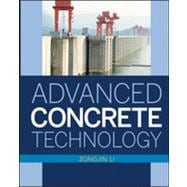
Note: Supplemental materials are not guaranteed with Rental or Used book purchases.
Purchase Benefits
What is included with this book?
1 Introduction to Concrete.
1.1 Concrete Definition and Historical Development.
1.2 Concrete as a Structural Material.
1.3 Characteristics of Concrete.
1.4 Types of Concrete.
1.5 Factors Influencing Concrete Properties.
1.6 Approaches to Study Concrete.
Discussion Topics.
References.
2 Materials for Making Concrete.
2.1 Aggregates.
2.2 Cementitious Binders.
2.3 Admixtures.
2.4 Water.
Discussion Topics.
Problems.
References.
3 Fresh Concrete.
3.1 Workability of Fresh Concrete.
3.2 Mix Design.
3.3 Procedures for Concrete Mix Design.
3.4 Manufacture of Concrete.
3.5 Delivery of Concrete.
3.6 Concrete Placing.
3.7 Early-Age Properties of Concrete.
Discussion Topics.
Problems.
References.
4 Structure of Concrete.
4.1 Introduction.
4.2 Structural Levels.
4.3 Structure of Concrete in Nanometer Scale: C–S–H Structure.
4.4 Transition Zone in Concrete.
4.5 Microstructural Engineering.
Discussion Topics.
References.
5 Hardened Concrete.
5.1 Strengths of Hardened Concrete.
5.2 Stress–Strain Relationship and Constitutive Equations.
5.3 Dimensional Stability—Shrinkage and Creep.
5.4 Durability.
Discussion Topics.
Problems.
References.
6 Advanced Cementitious Composites.
6.1 Fiber-Reinforced Cementitious Composites.
6.2 High-Strength Cementitious Composites.
6.3 Polymers in Concrete.
6.4 Shrinkage-Compensating Concrete.
6.5 Self-Compacting Concrete.
6.6 Engineered Cementitious Composite.
6.7 Tube-Reinforced Concrete.
6.8 High-Volume Fly Ash Concrete.
6.9 Structural Lightweight Concrete.
6.10 Heavyweight Concrete.
Discussion Topics.
Problems.
References.
7 Concrete Fracture Mechanics.
7.1 Introduction.
7.2 Linear Elastic Fracture Mechanics.
7.3 The Crack Tip Plastic Zone.
7.4 Crack Tip Opening Displacement.
7.5 Fracture Process in Concrete.
7.6 Nonlinear Fracture Mechanics for Concrete.
7.7 Two-Parameter Fracture Model.
7.8 Size Effect Model.
7.9 The Fictitious Model by Hillerborg.
7.10 R-Curve Method for Quasi-Brittle Materials.
Discussion Topics.
Problems.
References.
8 Nondestructive Testing in Concrete Engineering.
8.1 Introduction.
8.2 Review of Wave Theory for a 1D Case.
8.3 Reflected and Transmitted Waves.
8.4 Attenuation and Scattering.
8.5 Main Commonly Used NDT-CE Techniques.
8.6 Noncontacting Resistivity Measurement Method.
Discussion Topics.
Problems.
References.
9 The Future and Development Trends of Concrete.
9.1 Sustainability of Concrete.
9.2 Deep Understanding of the Nature of Hydration.
9.3 Load-Carrying Capability–Durability Unified Service Life Design Theory.
9.4 High Toughness and Ductile Concrete.
References.
Index.
The New copy of this book will include any supplemental materials advertised. Please check the title of the book to determine if it should include any access cards, study guides, lab manuals, CDs, etc.
The Used, Rental and eBook copies of this book are not guaranteed to include any supplemental materials. Typically, only the book itself is included. This is true even if the title states it includes any access cards, study guides, lab manuals, CDs, etc.